While full sun is best for many garden plants, not every gardener has a sunny backyard or brightly lit garden beds. But, when shady yards are combined with dry soil, it can be even more difficult to find the right types of plants that can adapt to these conditions. If you’ve ever struggled to find plants that can grow in a very dry and shady garden space, don’t despair -- there are tons of plant varieties to try, you just need to know where to look.
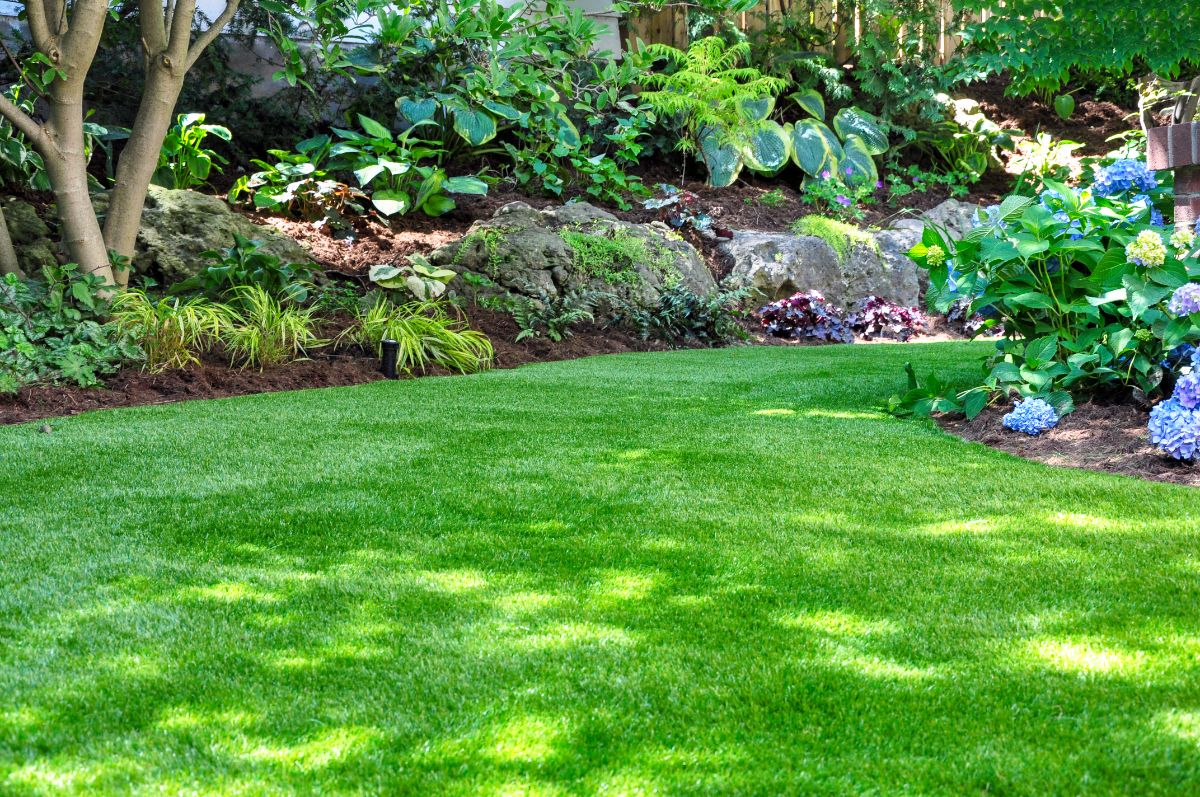
Plants suitable for dry shade gardens may be more limited, but there are still lots of choices. Many of the best plants for the job are actually native wildflowers that have evolved to be able to withstand, and even thrive in, adverse conditions.
In this article, we’ll explore some of the best dry shade loving plants to sow. We’ll cover both foliage and flowering plants, as well as plants that can adapt to small spaces and hanging baskets, to give you plenty of options. By the end of this article, we hope you’ll be inspired to try out some of these resilient plants in your shade garden for lots of color, fragrance and interest.
Jump to:
- A note about dry shade gardens
- 20 best plants to grow in dry shade gardens
- 1. Columbine (Aquilegia vulgaris)
- 2. Lily of the valley (Convallaria majalis)
- 3. English ivy (Hedera helix)
- 4. Bugleweed (Ajuga spp.)
- 5. Sweet woodruff (Galium odoratum)
- 6. St. John’s wort (Hypericum perforatum)
- 7. Lady’s mantle (Alchemilla vulgaris)
- 8. Hostas (Hosta spp.)
- 9. Foamflower (Tiarella cordifolia)
- 10. Coral bells (Heuchera sanguinea)
- 11. Lungwort (Pulmonaria spp.)
- 12. Foxglove (Digitalis spp.)
- 13. ‘Stella de Oro’ daylily (Hemerocallis x ‘Stella de Oro’)
- 14. Bleeding hearts (Dicentra spp.)
- 15. Hellebore (Helleborus spp.)
- 16. Common periwinkle (Vinca minor)
- 17. Solomon’s seal (Polygonatum biflorum)
- 18. Bigroot geranium (Geranium macrorrhizum)
- 19. Cushion spurge (Euphorbia epithymoides)
- 20. Dead nettle (Lamium spp.)
- Conclusion
A note about dry shade gardens
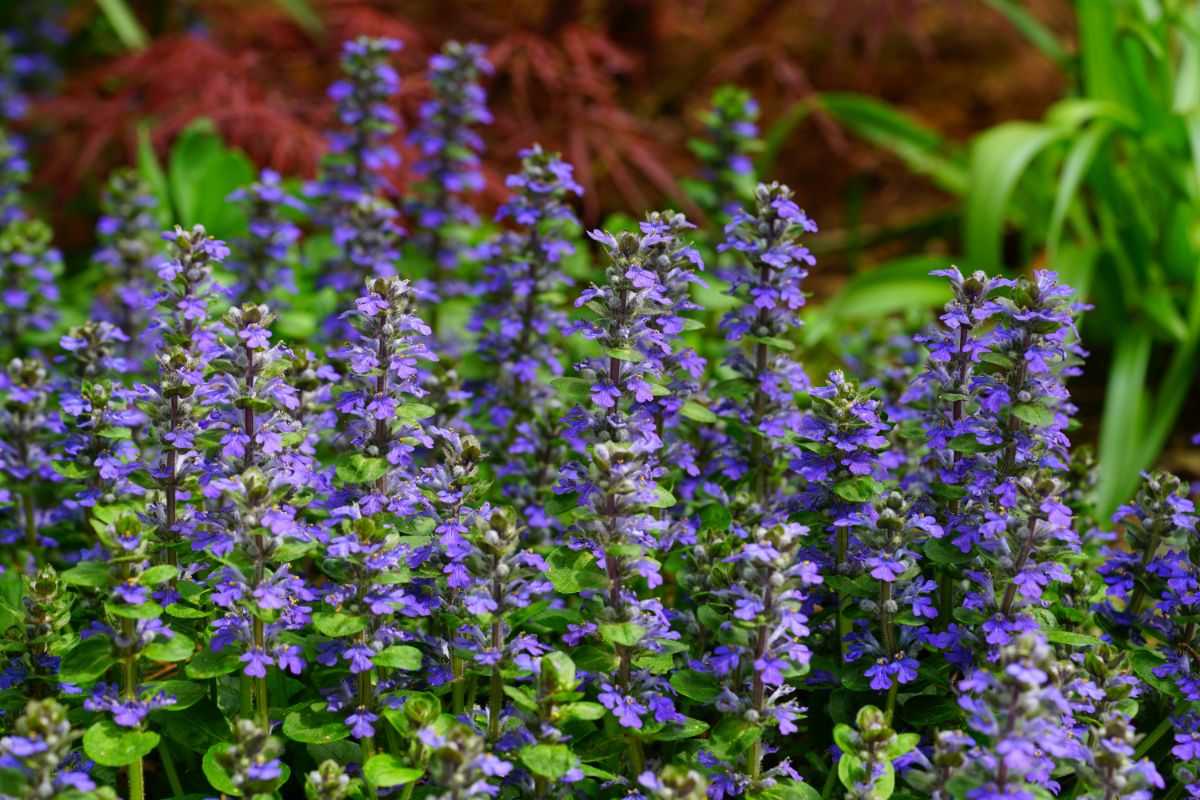
Just because some plants can adapt to dry, shady locations, doesn’t mean these conditions provide the ideal environment for these plants to grow in. While the plants on this list do prefer shade and can adapt to dry soil, most of them will grow better with average moisture levels.
All plants, even drought tolerant plants, require water to grow. So, it’s always a good idea to double check individual plant’s requirements and add a little more water to particularly parched soil if you can.
If you’re planning on planting in an area that is difficult to water, or that is naturally shaded from rain by roof overhangs or similar structures, you may want to think about adding a drip irrigation system. While they aren’t necessary, drip irrigation systems can help provide a bit more moisture to dry garden beds and can be pre-programmed with a timer for water conservation and automated watering.
Regardless of whether you choose a drip irrigation system or not, if you’re adding new plants to your garden, make sure you water them in well after planting to help them adapt to their new environment. For best results, regularly water new plantings for several weeks to help prevent transplant shock and other issues.
Adding a deep, 2 to 4” layer of natural mulch can also help dry soil retain moisture better and can work to protect plants from periods of intense heat or drought. While wood chips and bark are popular mulch choices, other natural mulch options include salt marsh hay, chopped autumn leaves or pea gravel, for a more permanent display.
20 best plants to grow in dry shade gardens
When choosing plants to keep in your shade garden, look for specimens that can adapt to a range of lighting conditions. Often, plants with thick or waxy-coated leaves and woody stems are more resilient in dry soil, but be sure to check plant nursery labels for growing recommendations prior to purchase.
Although there are other plants that can work in dry and shady garden beds, below are some of the best plants to grow in this type of garden.
1. Columbine (Aquilegia vulgaris)
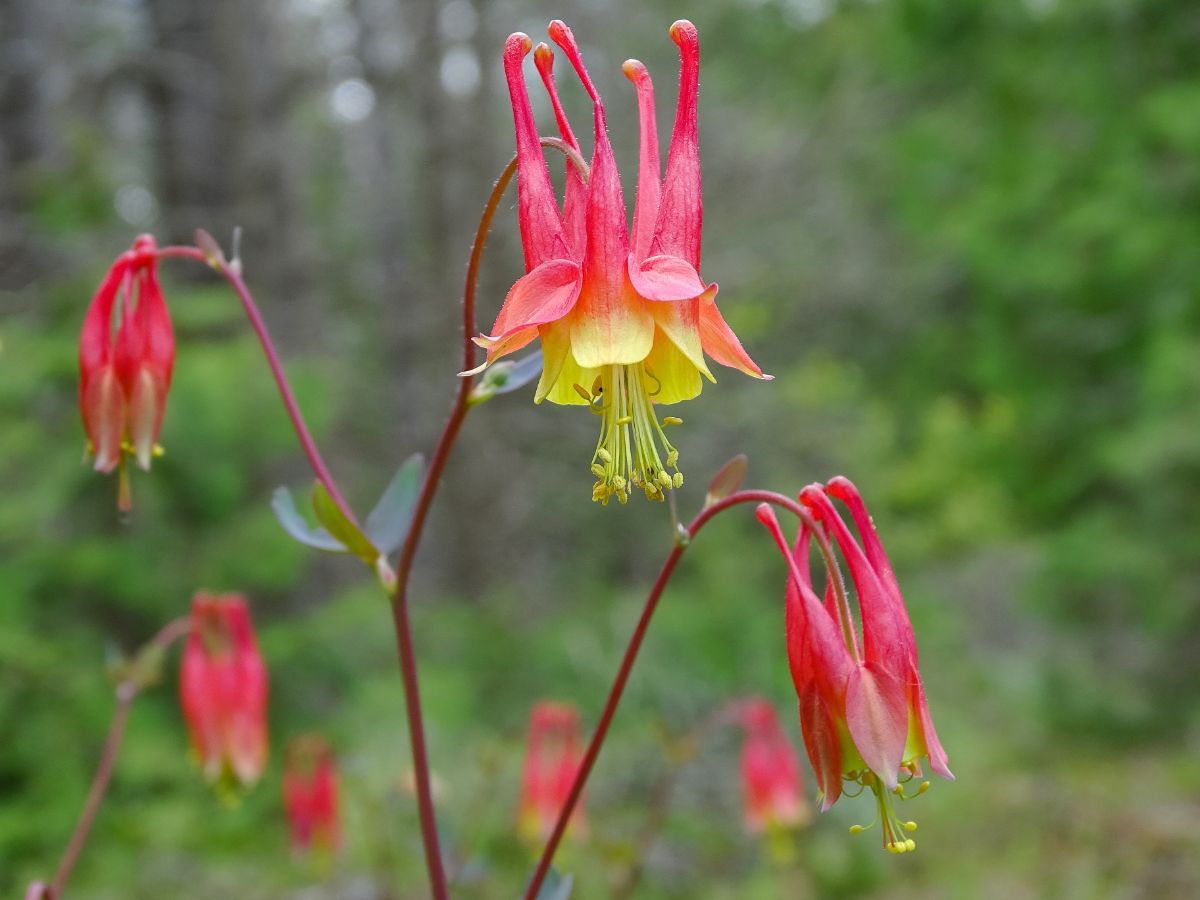
| Plant name: | Columbine |
| Bloom time: | Mid-spring to early summer |
| Growing zone: | Zones 3 to 8 |
| Interesting facts: | Columbine’s Latin name comes from the word for “dove” as the flowers are said to resemble 5 doves sitting together. |
Columbine are colorful woodland flowers that usually grow about 2’ tall by 1’ wide. With multiple species available on the market today, you can find columbine flowers in a range of colors, including purple, blue, red and white.
Spurred flowers form at the end of tall stems and have two layers to their petal formation: spiky, star-shaped outer petals which enclose more delicate rounded petals in a contrasting color. Leaves are soft, rounded and airy and have a bit of a fernlike quality to them.
Naturally deer resistant, columbines are very attractive to pollinators, including hummingbirds and bumblebees in particular. If you’re looking to create a pollinator garden, but your yard is shaded, columbines are some of the best plants to try.
2. Lily of the valley (Convallaria majalis)
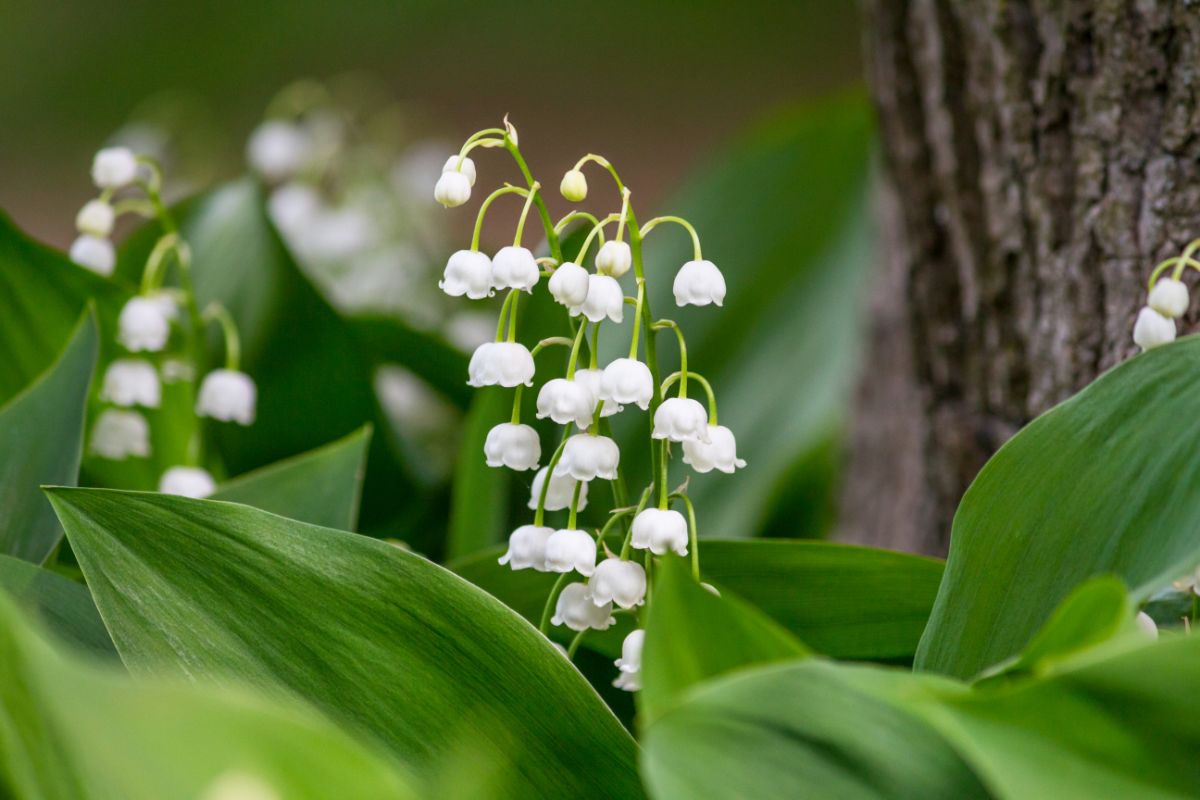
| Plant name: | Lily of the valley |
| Bloom time: | Early to mid-spring |
| Growing zone: | Zones 3 to 9 |
| Interesting facts: | Lily of the valley is so prized for its delicate floral aroma that many perfume companies attempt to mimic the scent in their fragrance formulas. |
Lily of the valley is a common plant in shade gardens, known for its oval leaves and delicate, bell-shaped and highly fragranced white flowers that appear in clusters on thin stems. Low growing, lily of the valley plants often bunch together and can form a pretty and unique groundcover in garden beds.
An early spring bloomer, lily of the valley spreads via rhizomes, is relatively cold tolerant, and is hardy to zone 3.
3. English ivy (Hedera helix)
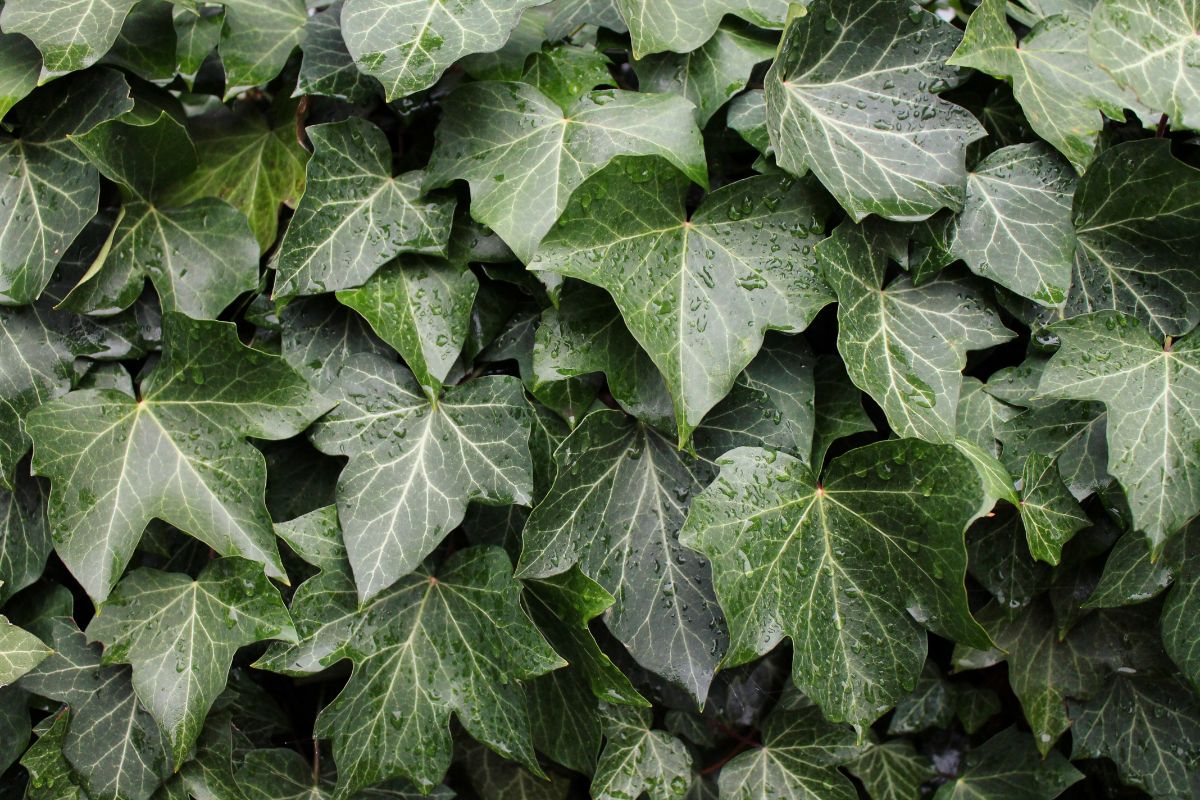
| Plant name: | English ivy |
| Bloom time: | Although not kept for their flowers, ivy can bloom in late summer to early fall |
| Growing zone: | Zones 4 to 8 |
| Interesting facts: | English ivy also grows happily as a houseplant and is a great choice for hanging baskets. However, if you choose to keep it indoors, just remember that ivy is toxic to house pets. |
English ivy is a gorgeous, vining foliage plant with lobed leaves that have an almost leathery feel to them. Leaves can come in variegated or solid green varieties and are usually the stars of the show; however, English ivy does bloom too! Ivy flowers appear as sprays of fine, greenish-white blossoms that usually begin flowering in late summer to early autumn.
A bit notorious for its vigorous growth habit, English ivy should be planted with care as it is invasive and is often best suited for container gardens. This is because English ivy’s woody vines can grow aggressively, and roots may damage masonry and cause harm to nearby trees.
When properly managed, English ivy is very pretty and, when kept well pruned, can even form an interesting groundcover or garden backdrop.
4. Bugleweed (Ajuga spp.)
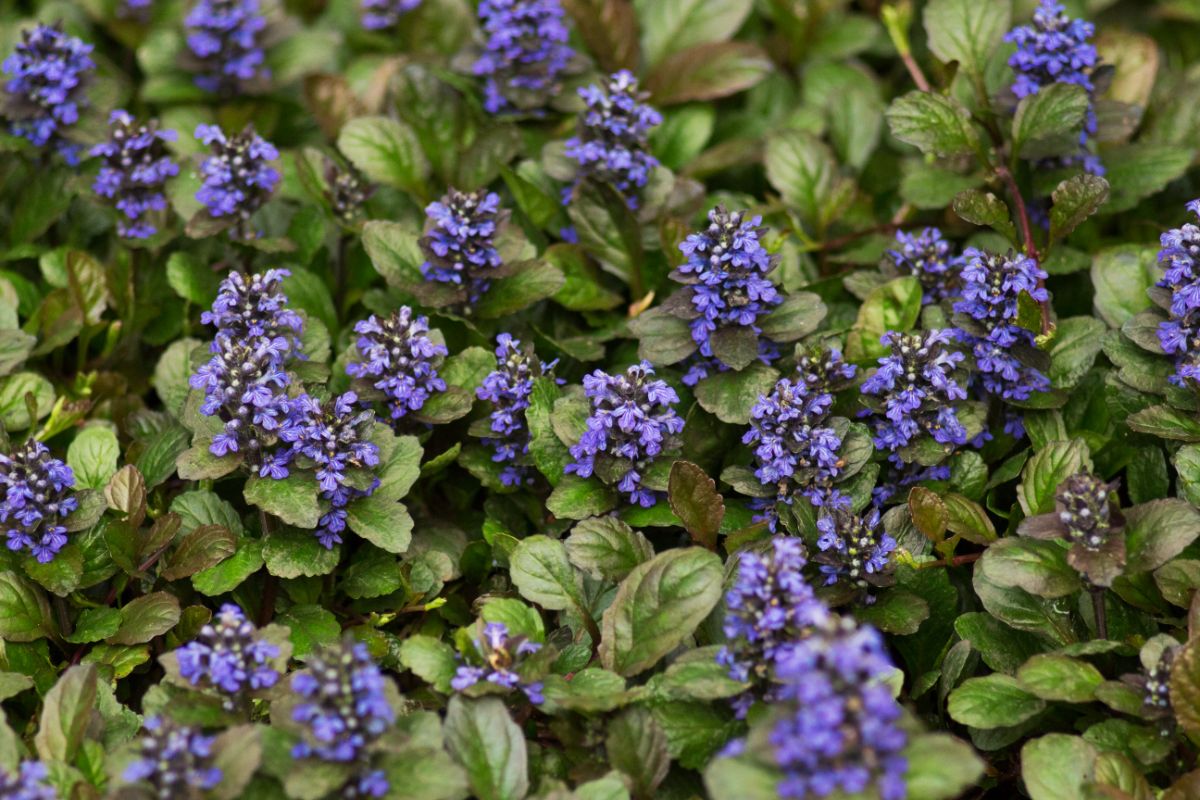
| Plant name: | Bugleweed |
| Bloom time: | May to June |
| Growing zone: | Zones 3 to 9 |
| Interesting facts: | Bugleweed is a favorite plant among bees and is favored by ground nesting bees because flowers grow so low to the ground. |
Also known as ajuga, bugleweed is a popular groundcover in shade gardens and grows so tightly that it can help control weeds naturally. Leaves are quite colorful, ranging from deep purple to bronze to variegated green and white. These plants are named after their spikes of trumpet shaped flowers that appear in blue, purple, white or pink and bloom from May to June.
A member of the mint family, bugleweed is a very low maintenance plant and spreads readily with minimal care.
5. Sweet woodruff (Galium odoratum)
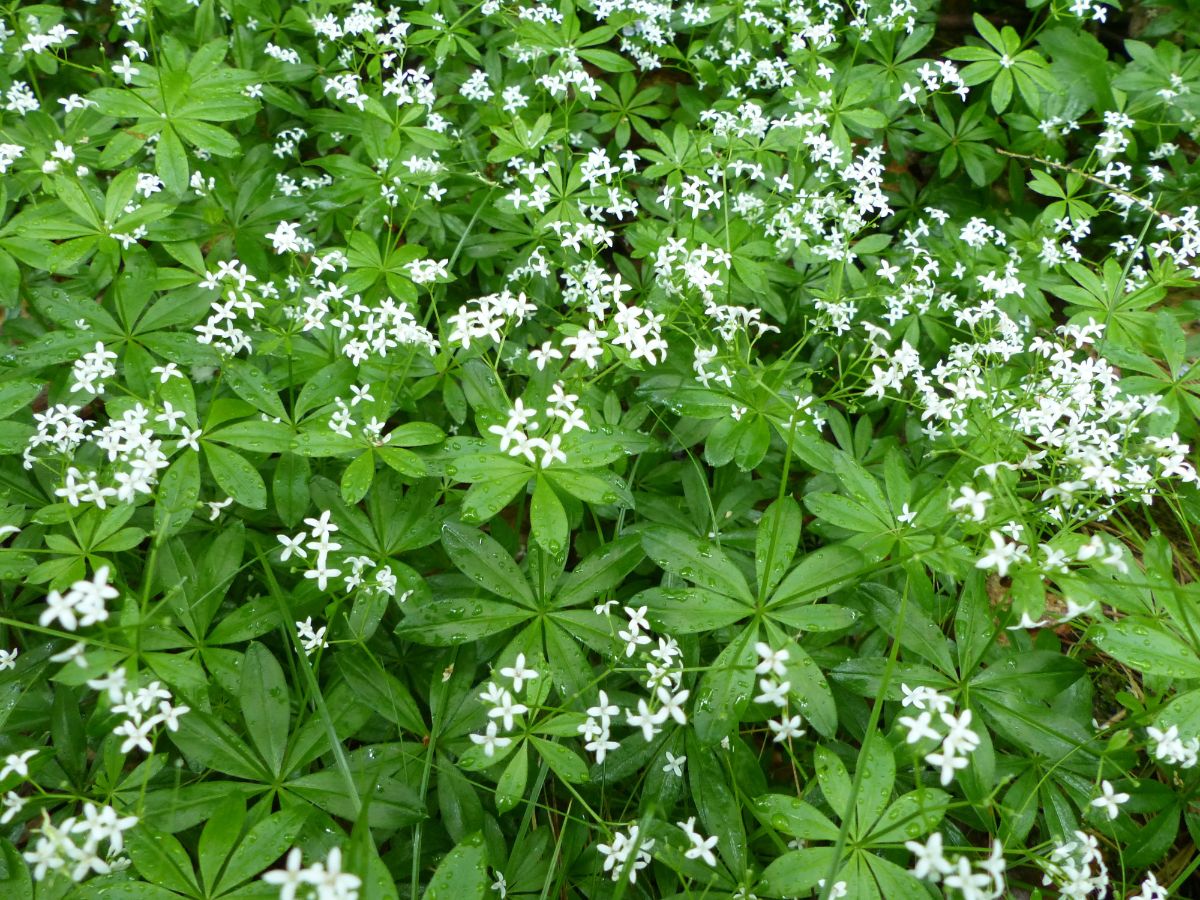
| Plant name: | Sweet woodruff |
| Bloom time: | Late spring |
| Growing zone: | Zones 4 to 8 |
| Interesting facts: | Also known as bedstraw, sweet woodruff’s fragrant leaves were once used as pillow and mattress stuffing. Today, they are more frequently used in potpourri and scented sachets. |
Also known as bedstraw, sweet woodruff is a beautiful groundcover for shade gardens, growing between 6 to 12” high when fully mature. Delicate, highly fragranced white flowers appear in mid-spring and are a fine complement to the plant’s deep green whorled leaves.
In moist areas, sweet woodruff can spread rapidly via creeping rhizomes; however, they grow slower and more compactly in dry soil. An excellent choice for pollinator gardens, plant some sweet woodruff to attract butterflies, hummingbirds and other native pollinators.
6. St. John’s wort (Hypericum perforatum)
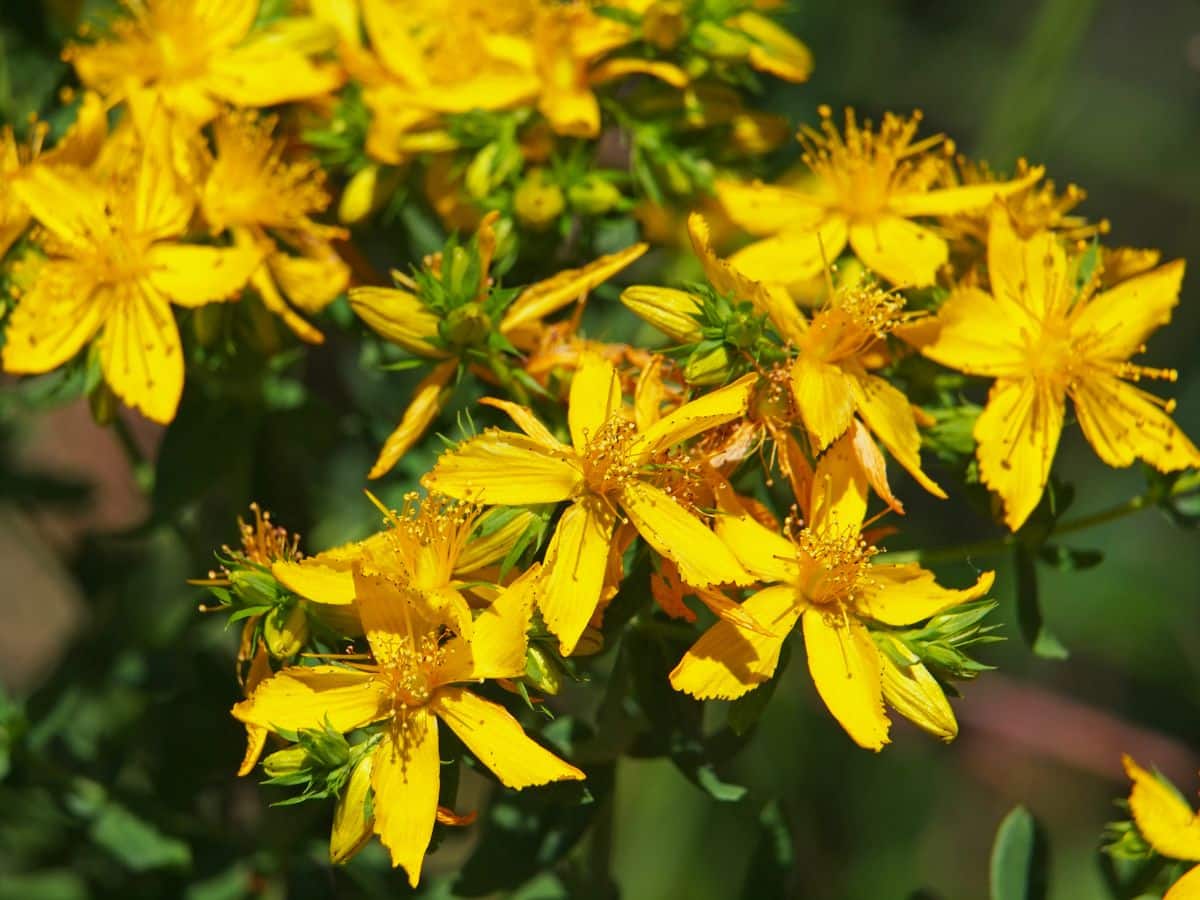
| Plant name: | St. John’s wort |
| Bloom time: | June to September |
| Growing zone: | Zones 5 to 9 |
| Interesting facts: | St. John’s wort is strongly associated with the summer solstice (June 21st) as blooms usually first appear around this time. |
St. John’s wort is a cheery native wildflower, with clusters of small, brightly-colored yellow flowers appearing atop slender, 2 to 4’ high plants. Leaves are small and oval in shape, while the plant itself is easily recognized by the way the yellow petals turn reddish brown when crushed between your fingers.
Naturally deer resistant, St. John’s wort looks particularly pretty when paired with other airy plants, like lady’s mantle and Solomon’s seal. And, with a very long bloom time, you’ll be enjoying these lovely flowers from summer to early autumn.
7. Lady’s mantle (Alchemilla vulgaris)
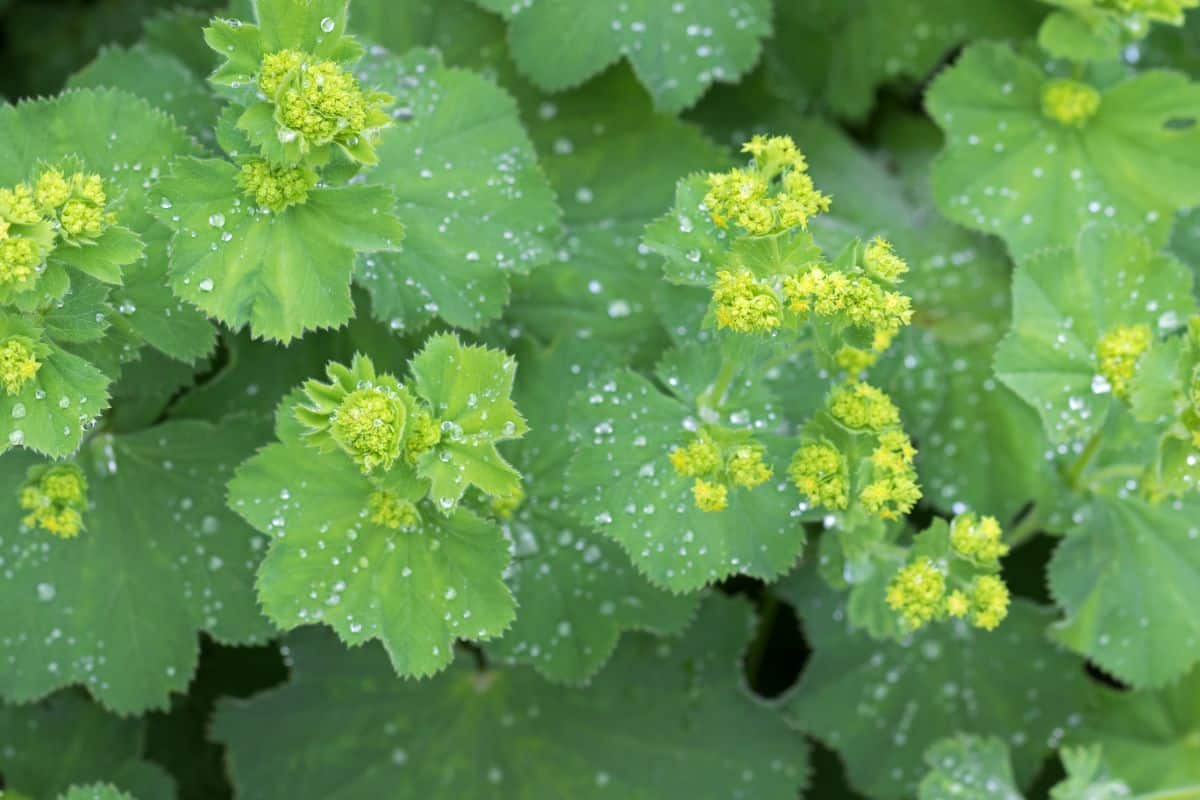
| Plant name: | Lady’s mantle |
| Bloom time: | June to September |
| Growing zone: | Zones 3 to 7 |
| Interesting facts: | Lady’s mantle’s Latin name “Alchemilla” comes from the historical belief that water droplets that form on its leaves could be used in alchemy. |
Lady’s mantle is a beautiful shade plant with large, bright green leaves that have scalloped margins. Beginning in June, lady’s mantle blooms clusters of bright green to yellow flowers that appear in delicate and foamy sprays.
Growing in mounds roughly 1 ½’ high by 2 ½’ wide, lady’s mantle is a medium-sized plant that works well as a border plant or as a highlight on shaded garden pathways. If you love crafts, lady’s mantle blooms dry well and look lovely in cut flower arrangements too.
8. Hostas (Hosta spp.)
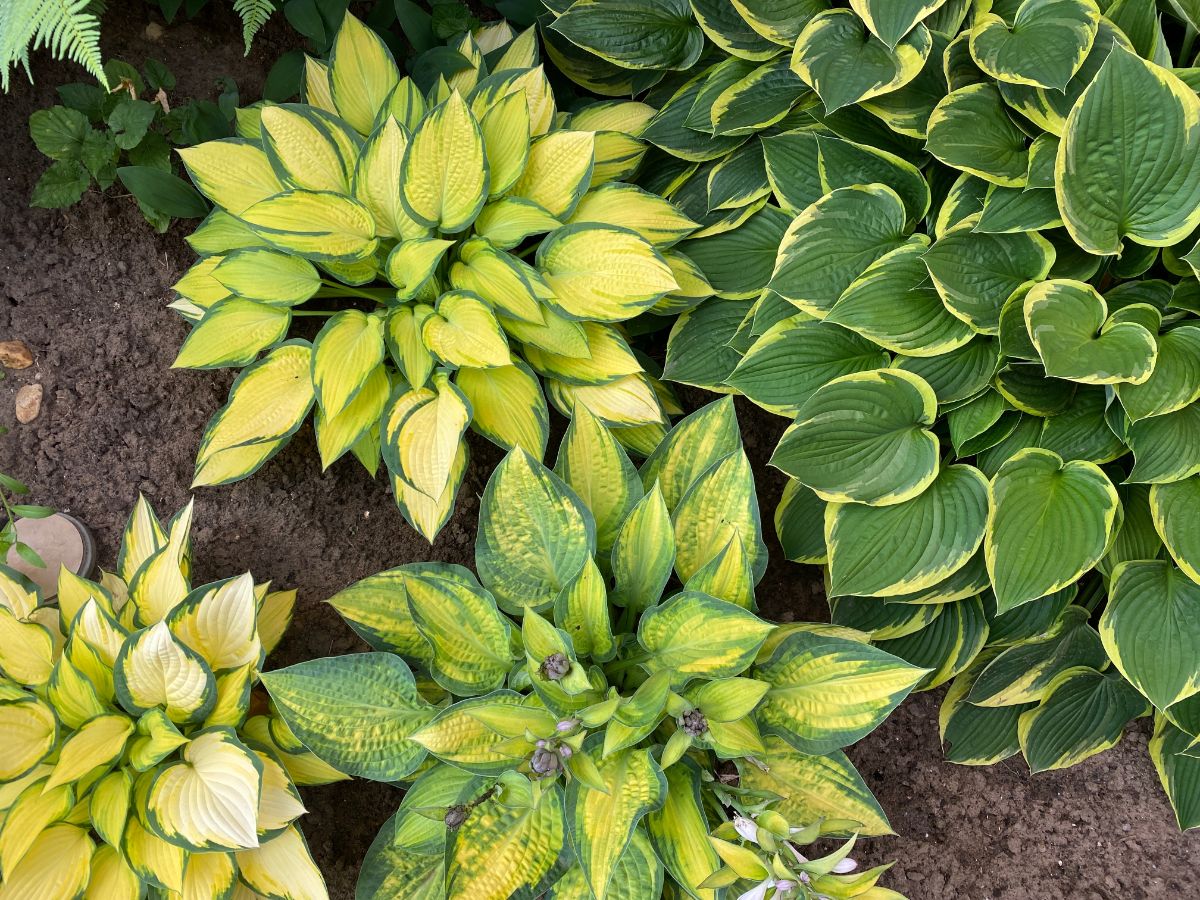
| Plant name: | Hostas |
| Bloom time: | May to September |
| Growing zone: | Zones 3 to 9 |
| Interesting facts: | All parts of hostas are edible and can be cooked and eaten like asparagus. |
Hostas are some of the most popular plants for shade gardens because they’re easy to grow and offer lots of “wow” factor with their often variegated leaves. With hundreds of hostas to choose from (with different leaf shapes, sizes and colors) you can switch things up, mixing a few hosta varieties together for an interesting display.
But hostas aren’t just prized for their foliage – they flower too! Hostas can bloom from May to September, depending on the variety. Flowers are white or purple and tubular in shape, forming on long, tall spikes that give your hostas a bit more height.
9. Foamflower (Tiarella cordifolia)
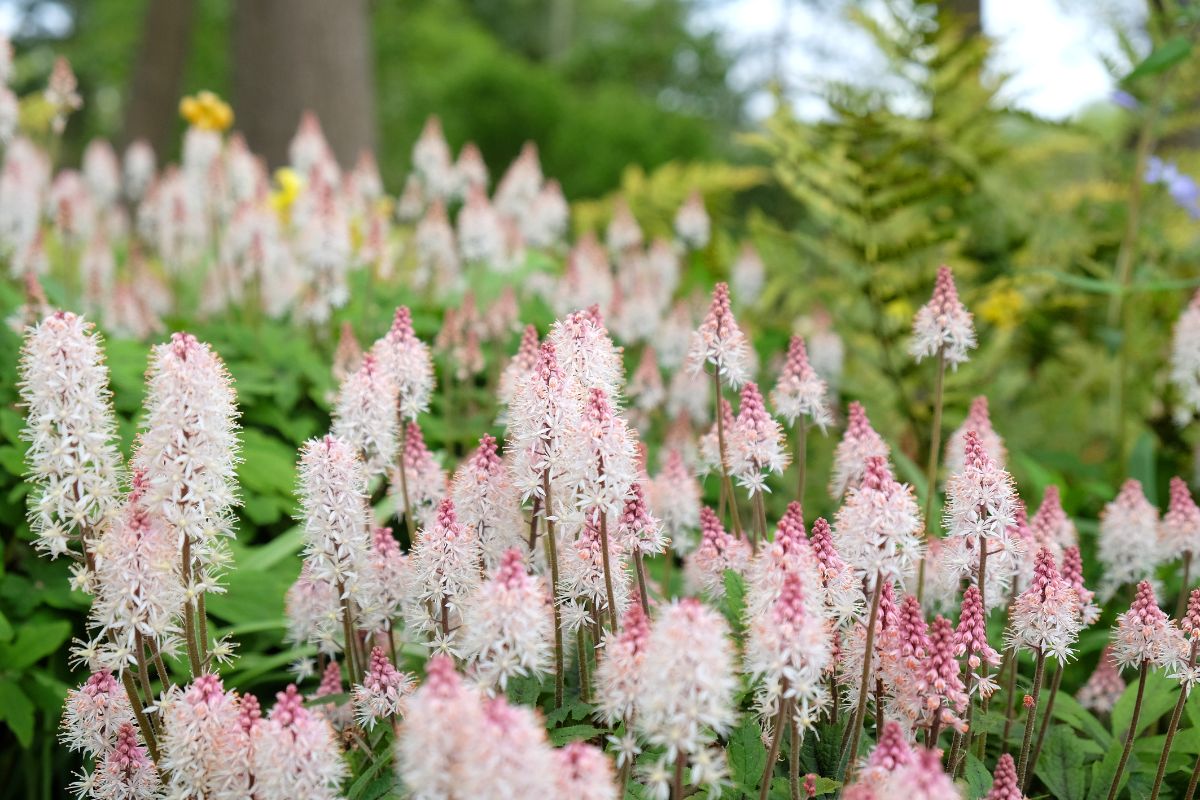
| Plant name: | Foamflower |
| Bloom time: | April to July |
| Growing zone: | Zones 3 to 8 |
| Interesting facts: | Foamflower blooms are a favorite among beneficial insects like hoverflies, bees and butterflies. |
Foamflower is an unusual-looking, low growing perennial that grows in dense mats or clumps in shady areas. Native to North America, foamflower blooms in spring, with frothy flowers (in either pink or white) appearing at the end of tall spikes. And, while these plants are often kept for their blooms, they also are wonderful foliage plants too with colorful lobed leaves that come in a range of hues.
Spreading via runners, foamflowers grow up to 12” high and are naturally deer resistant.
10. Coral bells (Heuchera sanguinea)
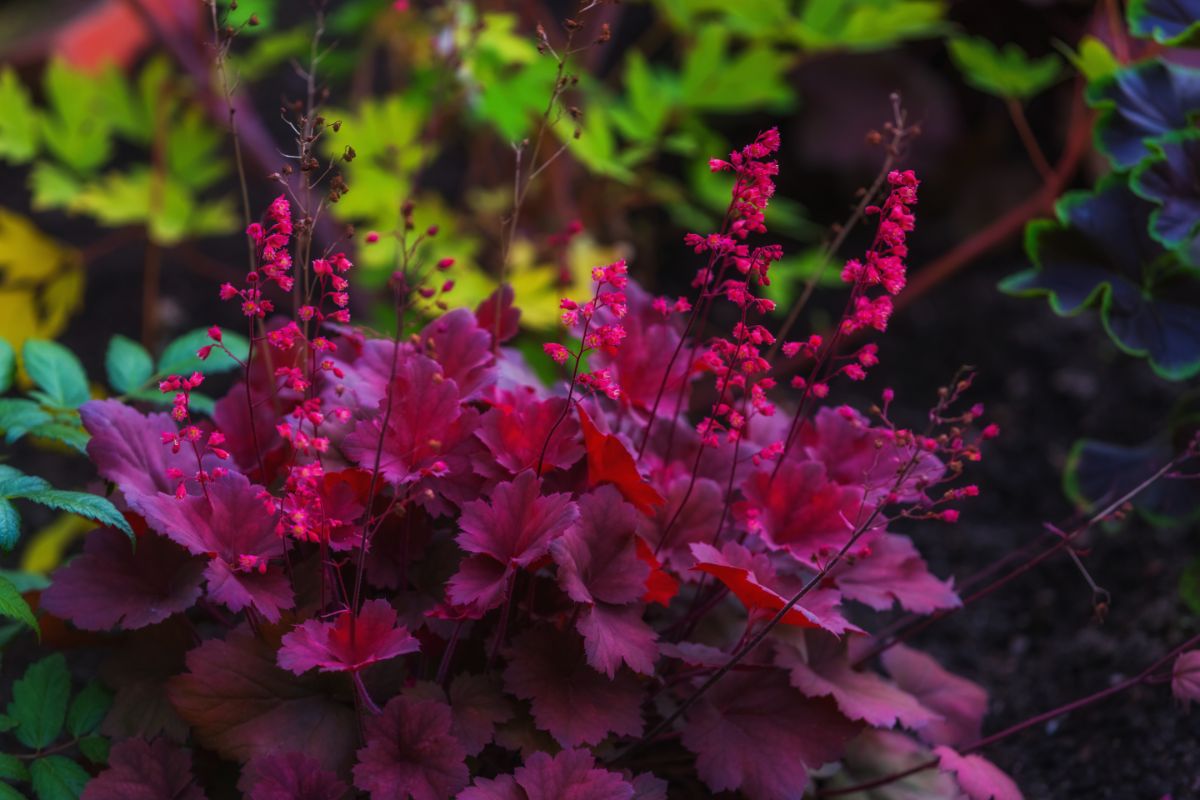
| Plant name: | Coral bells |
| Bloom time: | Early to mid-summer |
| Growing zone: | Zones 4 to 9 |
| Interesting facts: | Coral bells are also known as alumroot. |
Coral bells have delicate sprays of showy bell-shaped flowers on tall spikes; however, most gardeners actually keep these plants for their colorful foliage. Heart-shaped, lobed leaves come in different colors, from bright green to red, with some particularly striking varieties having leaves with a two-toned, marbled appearance.
In nature, coral bells are often found on well-draining rocky cliffs, so they are well adapted to drier areas. They grow in mounded clusters, stay relatively small and are attractive to birds, butterflies and other beneficial insects.
11. Lungwort (Pulmonaria spp.)
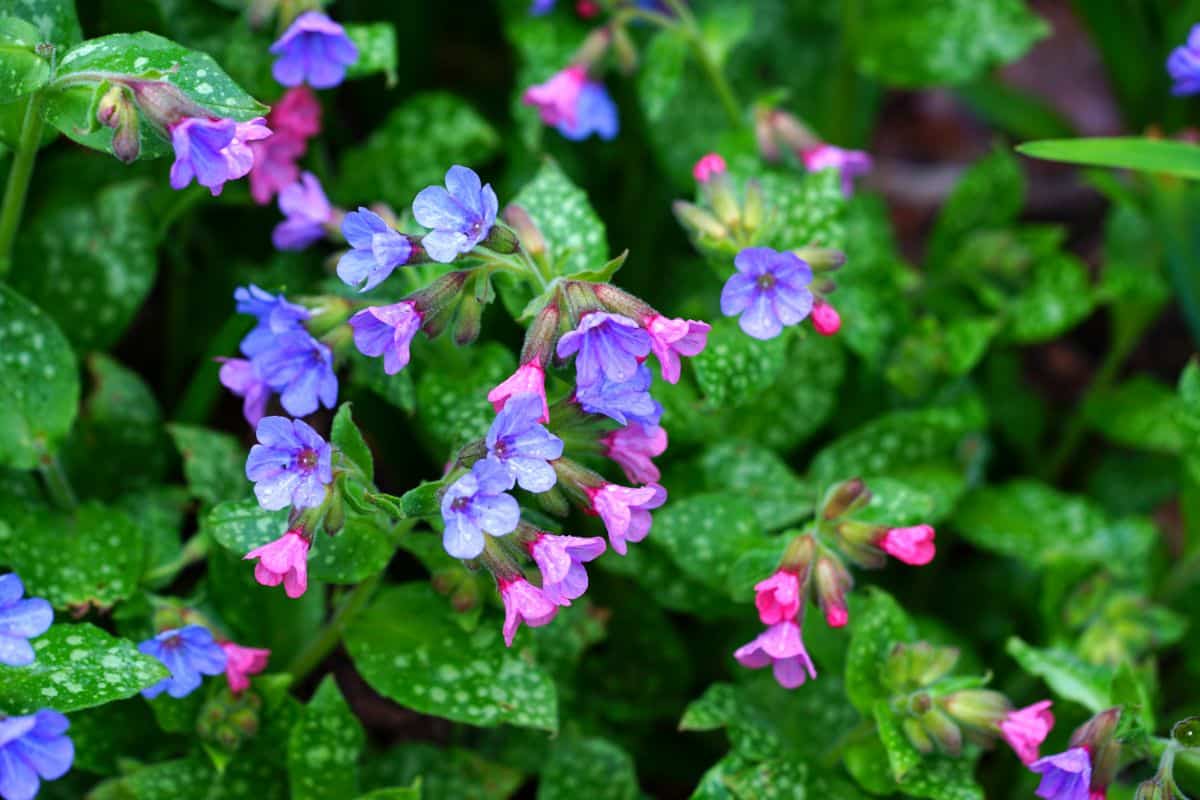
| Plant name: | Lungwort |
| Bloom time: | Early spring |
| Growing zone: | Zones 2 to 8 |
| Interesting facts: | Lungwort’s name comes from the historical belief that it could treat lung infections. |
Frequently used as a groundcover in shady areas, lungwort grows compactly together, making it excellent at naturally suppressing weed growth. Leaves can either be solid green or speckled with silvery dots, while bell-shaped flowers bloom in clustered forms in early spring. Flowers come in a range of colors including blue, pink, purple and white.
Adaptable to shade and dry soil, lungwort rarely reaches above 12” high, but can usually grow and spread quite rapidly.
12. Foxglove (Digitalis spp.)
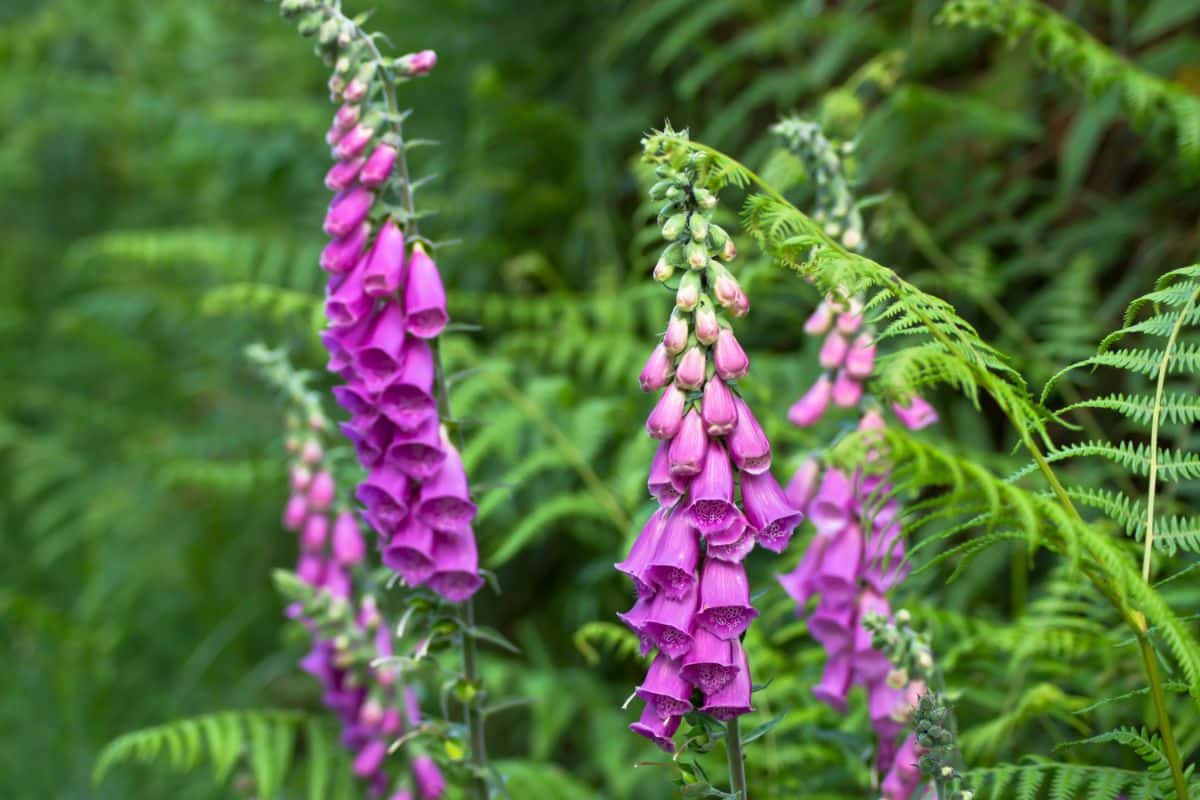
| Plant name: | Foxglove |
| Bloom time: | Early summer |
| Growing zone: | Zones 4 to 9 |
| Interesting facts: | Foxglove may have influenced Vincent Van Gogh’s “Yellow Period.” At the time, foxglove was believed to treat epilepsy. |
Foxglove can tolerate slightly dry soil, but it is not fully drought tolerant. For this reason, if you’d like to keep this plant in a dry and shady bed, try to supplement water a bit if you can. Additional water will encourage the plant to flower, and foxglove flowers are what most gardeners are after!
Foxglove flowers are most often seen in pink or purple, although they appear in yellow, red and white too. These long and tubular flowers form on the end of tall stems and are a favorite food source for hummingbirds. Foxglove flowers are also frequently kept in fairy gardens, thanks to their bright colors and whimsical look.
If you choose to keep foxgloves in your yard, just keep in mind that these plants are toxic if ingested, so take care with them, especially if you have outdoor pets or small children roaming around.
13. ‘Stella de Oro’ daylily (Hemerocallis x ‘Stella de Oro’)
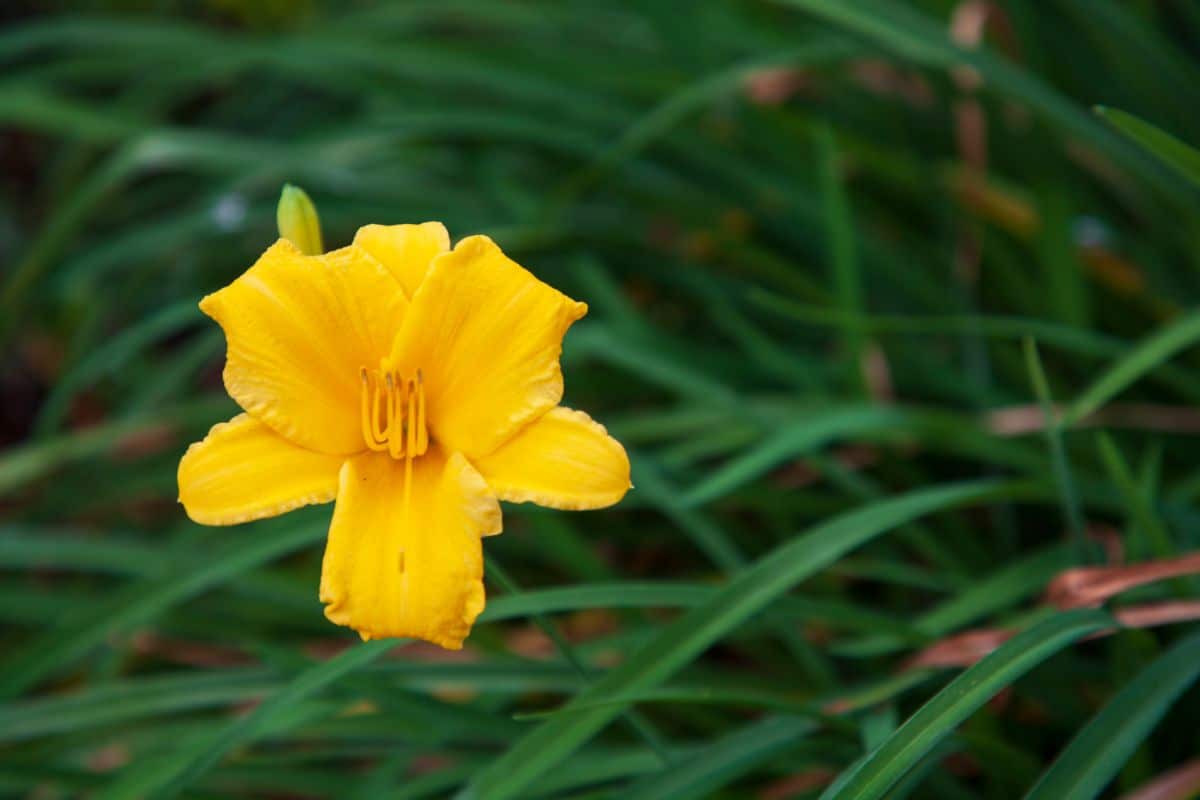
| Plant name: | ‘Stella de Oro’ daylily |
| Bloom time: | May to August |
| Growing zone: | Zones 3 to 10 |
| Interesting facts: | ‘Stella de Oro’ daylilies were the original re-blooming daylilies and were first introduced in 1975. |
‘Stella de Oro’ is a variety of reblooming lily that flowers throughout spring and summer. Large, golden-yellow, slightly cup-shaped flowers make a stunning display when combined with lilies’ typical slender, deep green, grass-like leaves.
Once established, this drought tolerant plant can go 2 to 3 weeks without water and is super easy to care for. Maxing out at around 12” in height, this lily variety is a great size for planting in the middle of garden beds or along garden walk ways.
14. Bleeding hearts (Dicentra spp.)

| Plant name: | Bleeding hearts |
| Bloom time: | Spring to early summer |
| Growing zone: | Zones 3 to 9 |
| Interesting facts: | Although bleeding hearts are often kept as in-ground plants, they can be grown in hanging baskets too. |
Bleeding hearts bloom in spring to early summer, with their iconic heart-shaped flowers dangling from long thin stalks. Flowers are usually pink, but they come in white too, and contrast nicely against bleeding hearts’ airy leaves.
As summer heat rises, bleeding hearts usually die back, but they’ll come back year after year with proper care. Growing up to 3’ tall, bleeding hearts are great plants to keep if you want to attract hummingbirds and other pollinators to your shade garden.
If you’re interested in growing these plants, they are often sold as dormant bare roots that are planted in spring.
15. Hellebore (Helleborus spp.)
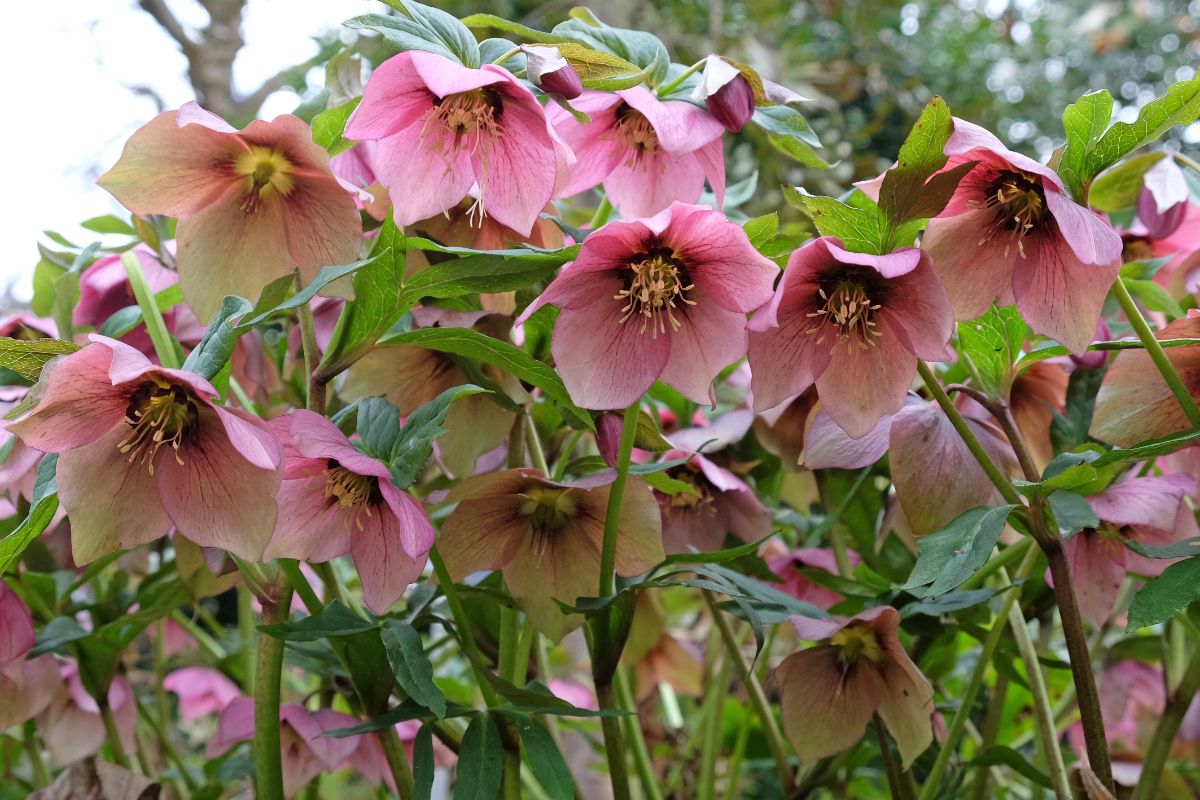
| Plant name: | Hellebore |
| Bloom time: | Early spring |
| Growing zone: | Zones 6 to 9 |
| Interesting facts: | Nicknamed “Lenten Roses,” hellebores often bloom around Eastertime. |
Also known as Lenten roses, hellebores have large, cup-shaped flowers that usually begin blooming in early spring, around Eastertime. Flowers come in lots of unusual colors, from bright chartreuse to deep pink to a dark, almost black, color.
Although not fully drought tolerant, hellebores can usually survive periods of infrequent watering, although bloom size and frequency may be diminished. Preferring rich soil, hellebores can adapt to a range of garden conditions and readily self-sow via seeds too.
16. Common periwinkle (Vinca minor)
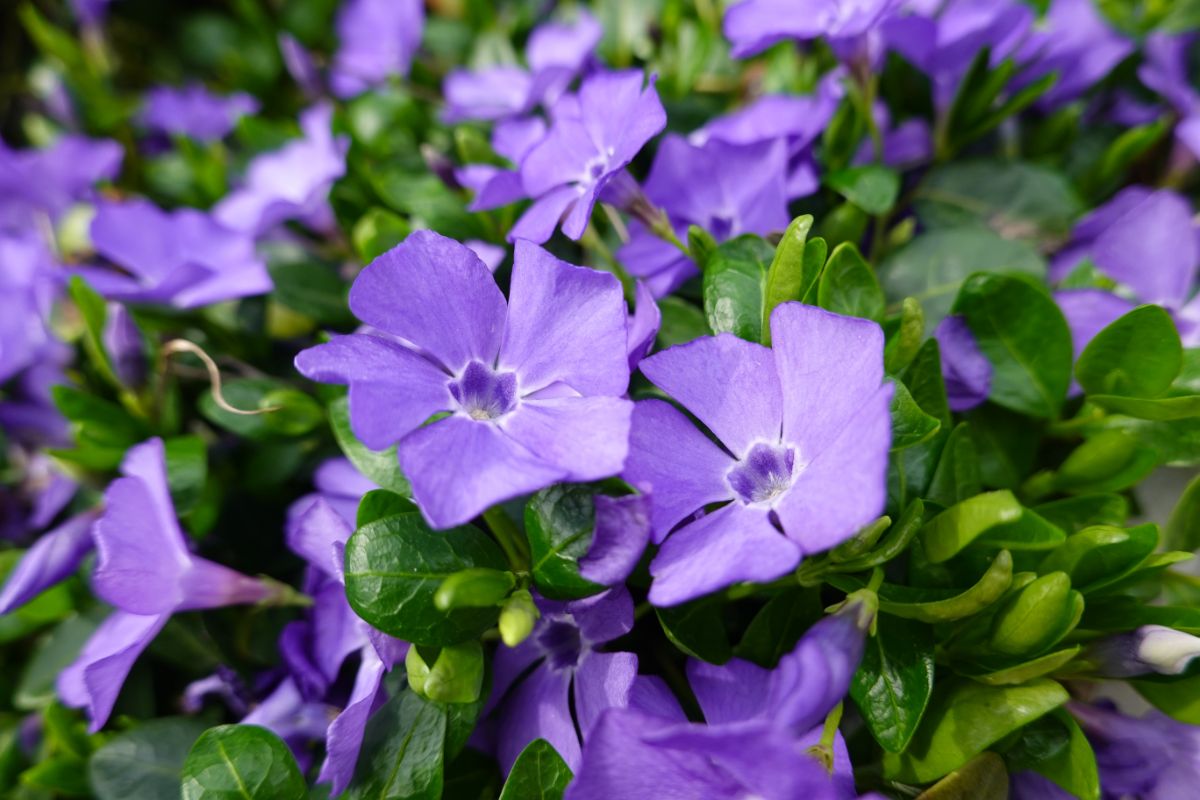
| Plant name: | Common periwinkle |
| Bloom time: | March to April; sometimes reblooming in fall |
| Growing zone: | Zones 4 to 9 |
| Interesting facts: | Periwinkles are native to Europe, and are naturally found in Portugal to Turkey and everywhere in between. |
Also known as vinca minor, periwinkle is a popular groundcover plant, but it works well in shaded hanging baskets too, where its long, slender vines drape prettily in the wind. Bright purple flowers are complemented by small ovate leaves, giving this plant a feminine appearance.
Periwinkle is a very hardy plant and can weather periods of drought like a champ. It grows well in shade, but prefers full sun when available.
17. Solomon’s seal (Polygonatum biflorum)
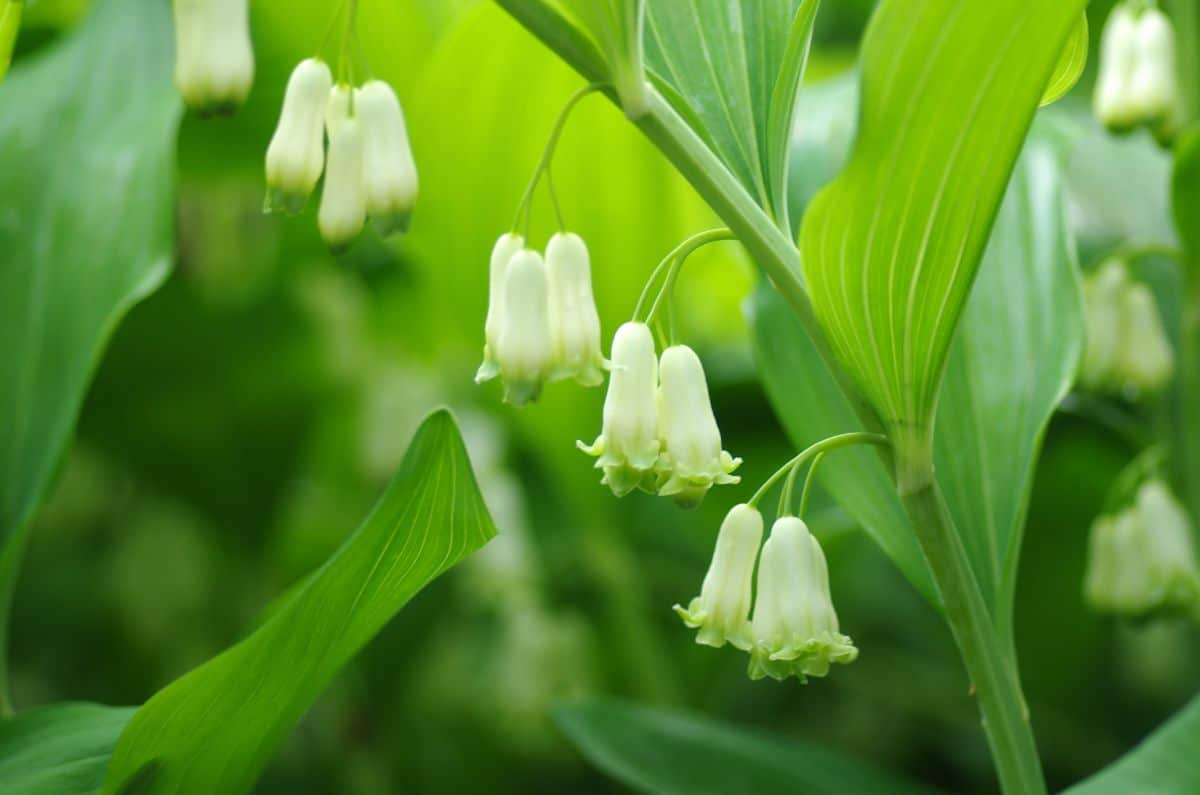
| Plant name: | Solomon’s seal |
| Bloom time: | April to June |
| Growing zone: | Zones 3 to 9 |
| Interesting facts: | The name “Solomon’s seal” is said to have been inspired by the roots, which look a bit like royal seals or Hebrew characters. |
Solomon's seal is a woodland plant that loves shade. This plant features a lovely architectural form with deep green leaves on gently draping stems. When they bloom, small, white tubular flowers dangle beneath the plant’s stem, giving Solomon’s seal a very unique look.
Perfect for shade gardens, Solomon’s seal needs a good deal of water when young, but can withstand periods of drought as it matures. However, for best results, Solomon’s seal should be provided with at least some regular watering.
18. Bigroot geranium (Geranium macrorrhizum)
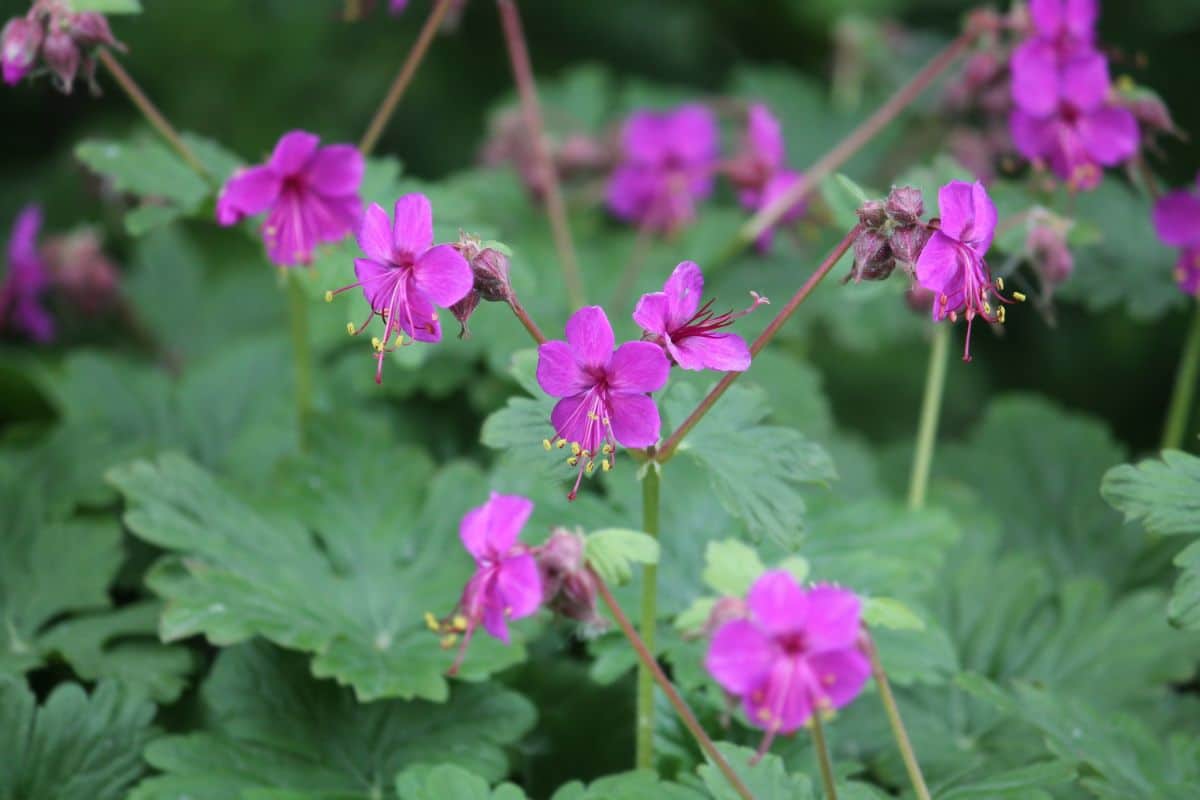
| Plant name: | Bigroot geranium |
| Bloom time: | Late spring |
| Growing zone: | Zones 3 to 8 |
| Interesting facts: | Bigroot geranium is native to the Balkans and the southeastern Alps. |
One of the absolute best plants to try in a shade garden, bigroot geranium is a highly forgiving plant. Preferring rich, well-draining soil, it can tolerate periods of drought too and its lobed leaves have a bit of fuzz to them, making them naturally deer and rabbit resistant.
Delicate pinkish purple flowers appear in late spring and are a hit with pollinators. In autumn, leaves turn a pretty reddish color that livens up fall beds at a time when other, less resilient plants are fading.
19. Cushion spurge (Euphorbia epithymoides)
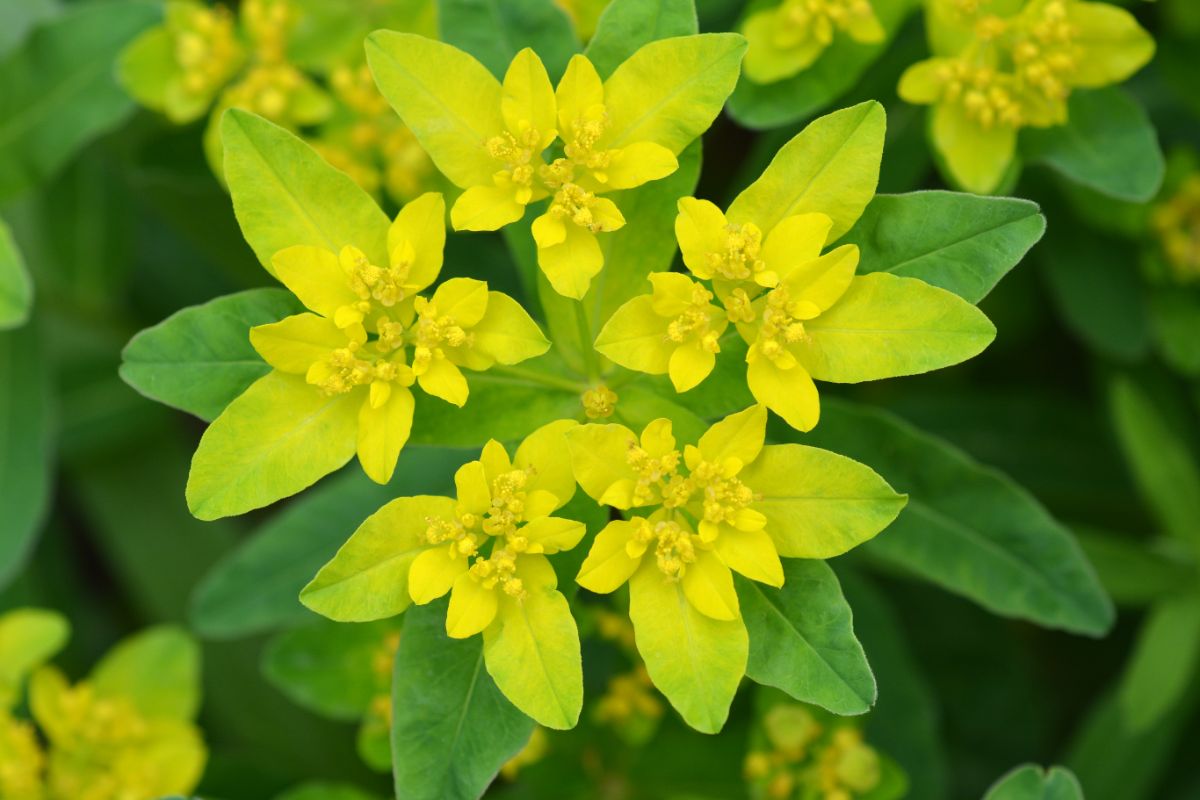
| Plant name: | Cushion spurge |
| Bloom time: | April |
| Growing zone: | Zones 4 to 8 |
| Interesting facts: | Like other spurges, cushion spurge contains a toxic latex sap. |
A relative of poinsettia, what appears as petals on spurge “flowers” are actually bracts, which are modified plant leaves. In spurge, these bracts are brightly colored and surround tiny lime green to yellow flowers that bloom in spring. When flowers die away, spurge still remains quite pretty, with mounds of greenish-gray foliage that turn a vibrant red in autumn.
Although spurge is often grown in sunny spots, it can adapt to shade, especially in hot areas.
20. Dead nettle (Lamium spp.)
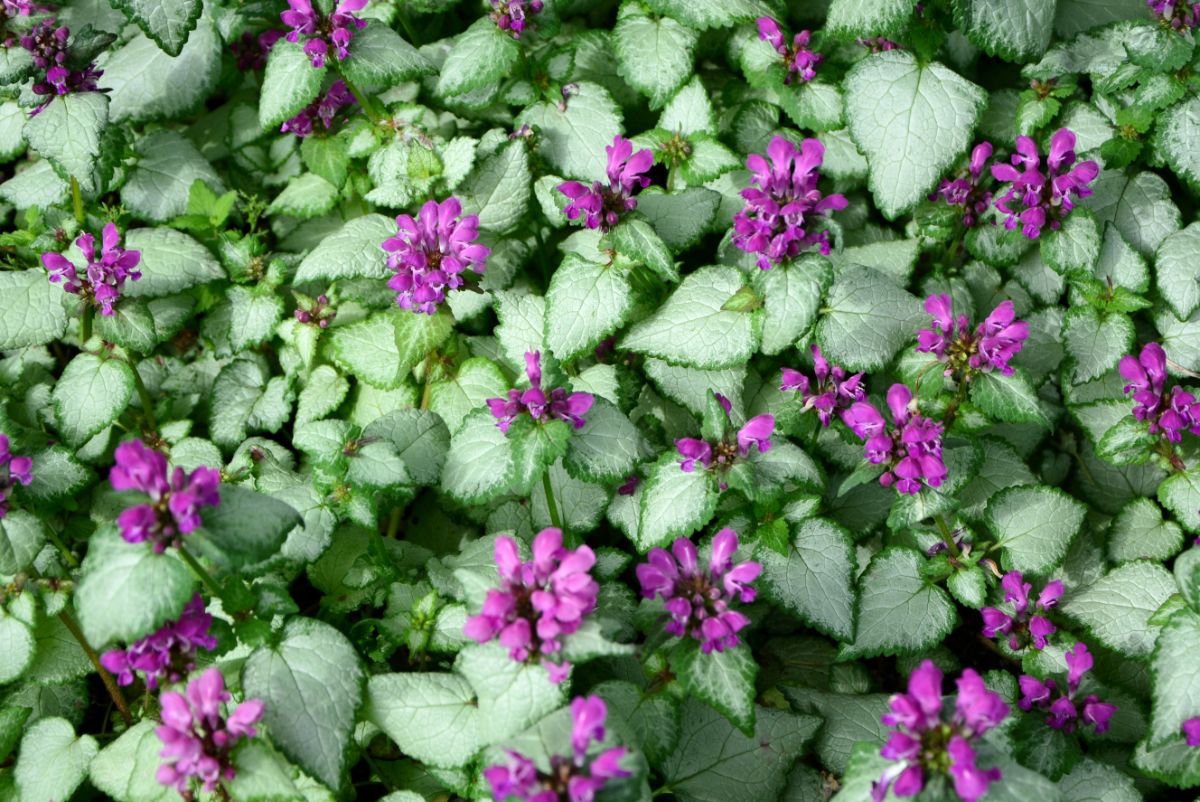
| Plant name: | Dead nettle |
| Bloom time: | May to June |
| Growing zone: | Zones 4 to 10 |
| Interesting facts: | Purple dead nettle is a wild edible and the leaves have a slightly sweet flavor. |
Another lovely groundcover for shade gardens, dead nettle is prized for its showy leaves that are often bright green or variegated and sometimes have a silvery tone to them. White, pink or purple flowers bloom throughout the summer, appear on low stalks and resemble snapdragon flowers in their form.
Purple dead nettle is a member of the mint family, and spreads vigorously as mints often do. Growth can be so dense that dead nettle can help to suppress weeds, while flowers are popular stopping spots for bees and other insects.
Conclusion
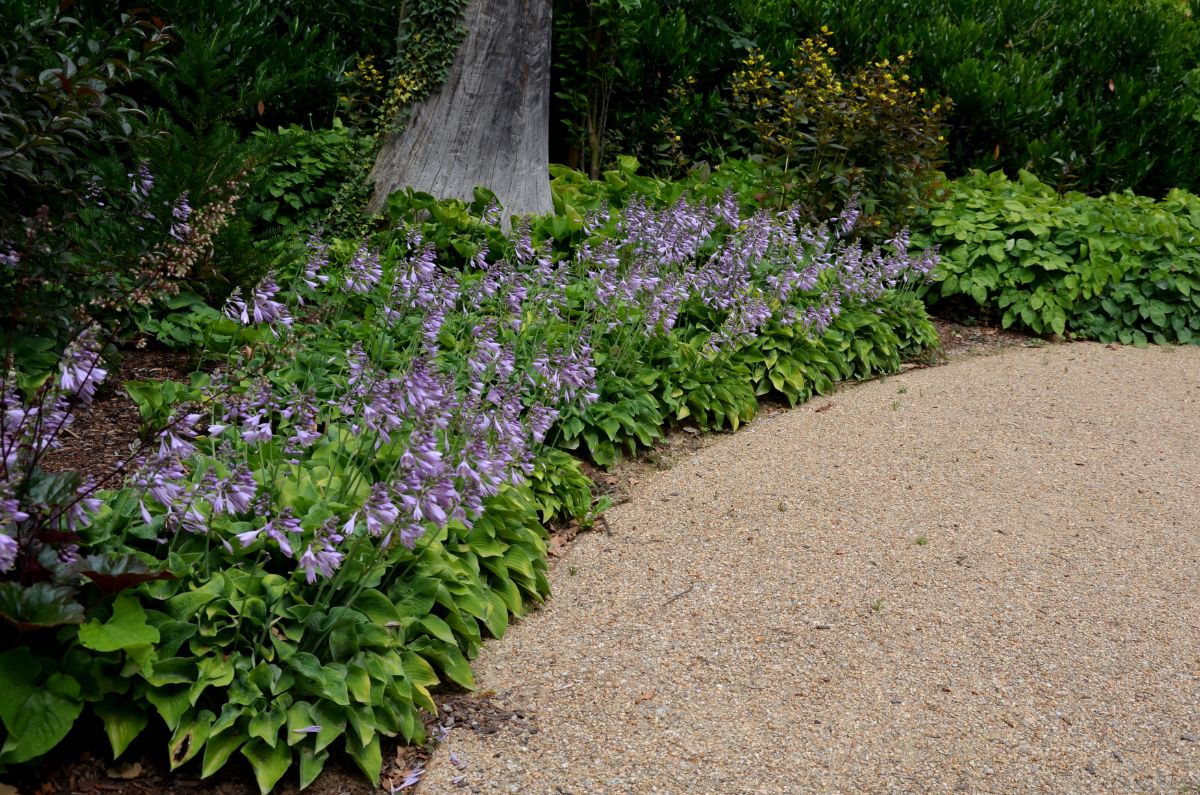
Just because you have a dry and shady garden, doesn’t mean you can’t have lots of flowers! While not all plants can adapt to these conditions, there are a surprising amount of hardy plants that can both live and thrive in dry, shade beds.
With the help of this guide, we hope you’ve found some inspiration for your shade garden. Whether you just choose to try out one new shade loving plant or you decide to combine several of the plants listed above in a single garden bed, you’re sure to add lots of color to your garden -- even in deep shade.
References:
- Beck, Andrea. “12 Tough Perennials That Grow in Dry Shade.” Better Homes & Gardens. 7 August 2022. 4 March 2022.
- Muntz, Helen. “Landscaping in Dry Shade.” Utah State University. 7 August 2022. March 2018.

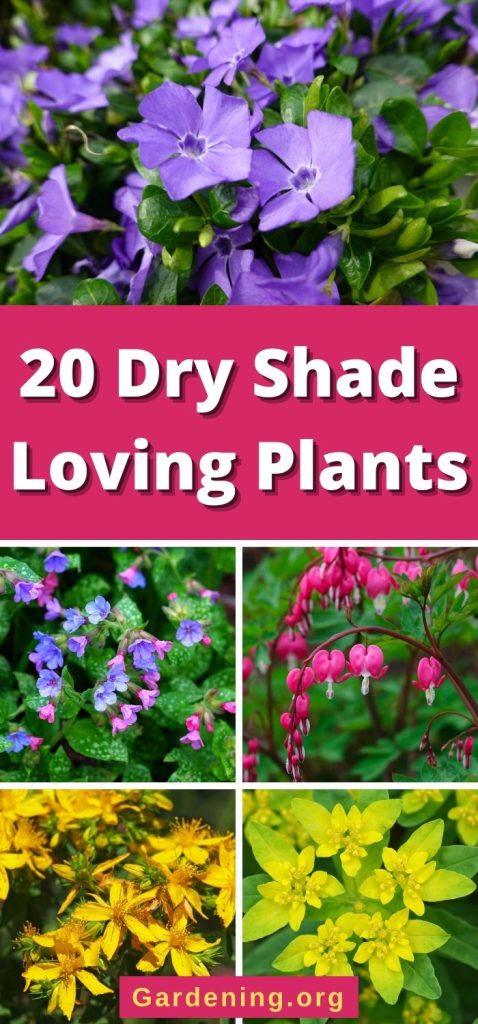
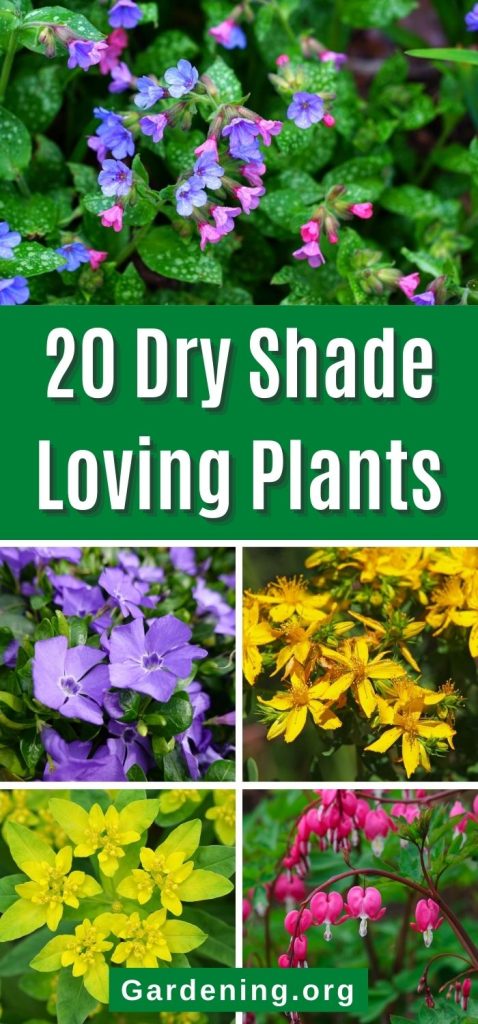
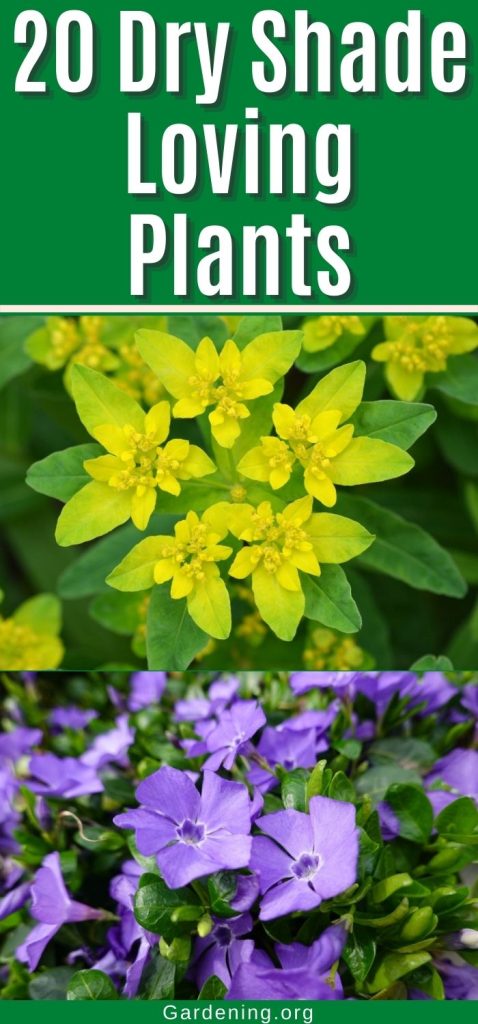
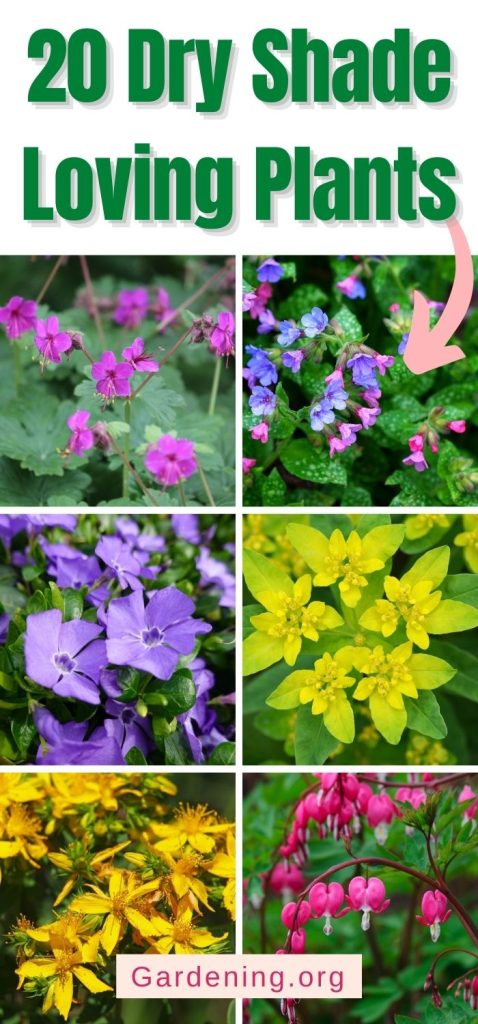
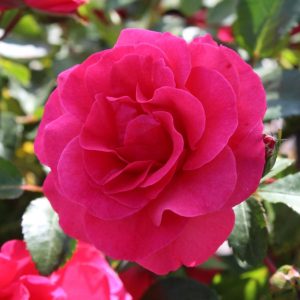
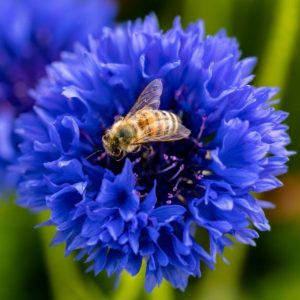
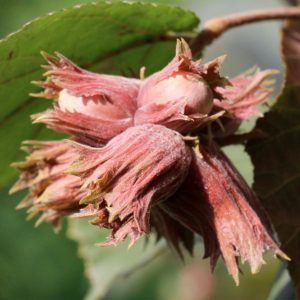
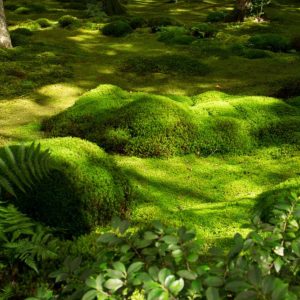
Mrs Blagbrough
Thank you for a very informative article. Thank you for their names and pictures and really good growing conditions. Wish all growers gave such good info. Thank you
Mary Ward
You're welcome. Thank you for reading. We hope you'll come back to find more useful information here!